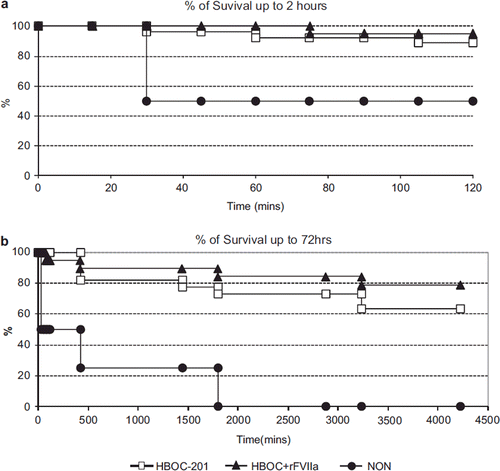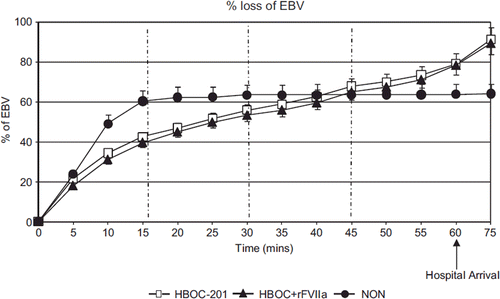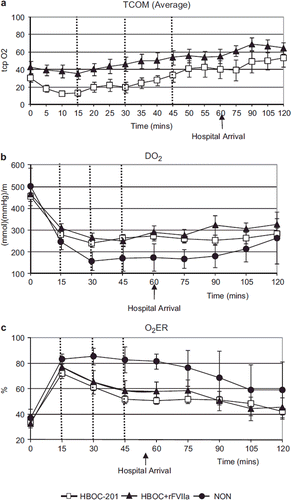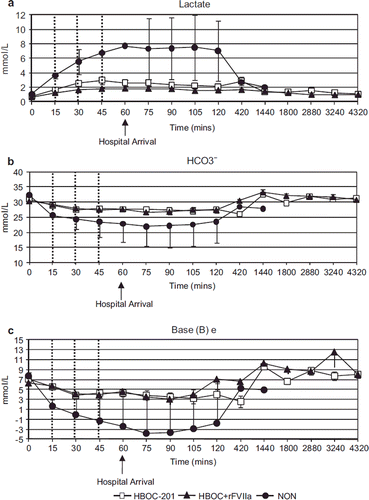Figures & data
Figure 1. Survival is increased but not statistically significant in the HBOC-201 group up to 2 hours (Figure 1a) and at 72 hours (Figure 1b) compared to the HBOC + rFVIIa group. No animal in the NON group lived to 72 hours.

Figure 2. The percent loss of estimated blood volume (EBV) () at T15 was 42%, 40%, and 60% for HBOC-201, HBOC + rFVIIa, and NON group, respectively (p = 0.002 HBOC + rFVIIa vs. NON). There was no statistical difference in percent loss of EBV () between the HBOC-201 and the HBOC + rFVIIa at hospital arrival T60 (79% and 78% p = 0.98).

Figure 3. Transcutaneous oxygenation saturation (tcpO2) (Figure 3a), O2 delivery (DO2) (Figure 3b), and O2 extraction ratio (O2ER) (Figure 3c) were the same in both HBOC-201 and HBOC + rFVIIa groups, but significantly improved in both groups compared to NON (p = 0.007).

Figure 4. Lactate clearance (Figure 4a), HCO3− (Figure 4b), and BE (Figure 4c) were similar over time in both HBOC-201 and HBOC + rFVIIa groups and were significantly lower in NON animals compared to the other groups (p < 0.0001).

Figure 5. HR (Figure 5c) increased in all groups in response to hemorrhage and began to normalize at 60 minutes. MAP (Figure 5a), MPAP (Figure 5b), and CI (Figure 5d) was similar over time in both HBOC-201 and HBOC + rFVIIa groups and was significantly lower in NON animals compared to the other groups [MAP, (p < 0.0001)].
![Figure 5. HR (Figure 5c) increased in all groups in response to hemorrhage and began to normalize at 60 minutes. MAP (Figure 5a), MPAP (Figure 5b), and CI (Figure 5d) was similar over time in both HBOC-201 and HBOC + rFVIIa groups and was significantly lower in NON animals compared to the other groups [MAP, (p < 0.0001)].](/cms/asset/138779ee-2d3e-46f4-8b48-192e043116ca/ianb19_a_585615_f0005_b.gif)
Table 1. Parameters measured in swine treated with HBOC-201 or HBOC + rFVIIa during the experiment.